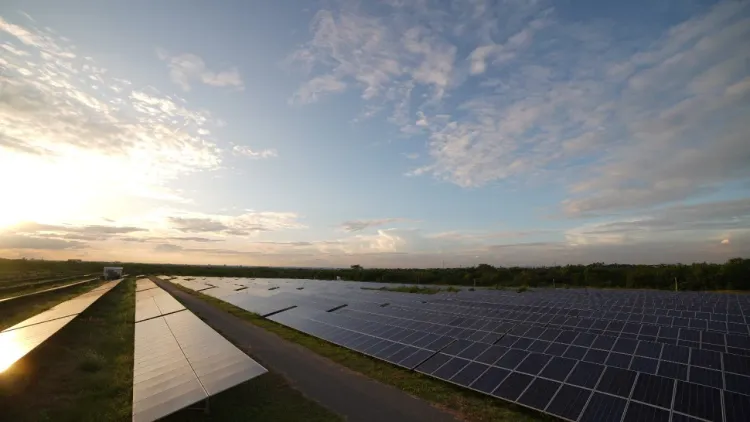Is India Set to Lead with Nearly $12.67 Billion in FDI for Renewable Energy?

Synopsis
Key Takeaways
- India has attracted nearly $12.67 billion in FDI for renewable energy.
- Solar energy leads the sector in attracting investments.
- The government is committed to achieving 500 GW of non-fossil fuel capacity by 2030.
- India is now the third-largest producer of solar energy in the world.
- Wind energy capacity is steadily increasing, reaching 51.67 GW.
In New Delhi, on August 19, (NationPress), it was reported that foreign direct investment (FDI) in the renewable energy sector has reached nearly $12,674 million ($12.67 billion) as of March 31, 2025, according to information shared in Parliament.
The solar energy sector has taken the lead, garnering most of this investment, with the western region of India receiving the largest share during this timeframe, as stated by the Minister of State for New and Renewable Energy and Power, Shripad Yesso Naik, in a written response to the Rajya Sabha.
The government recognizes the necessity to boost investments in renewable energy to achieve the national goal of 500 GW of non-fossil fuel capacity by 2030. Various initiatives have been launched to attract both domestic and international funding, including allowing 100% FDI under the automatic route and introducing a Climate Finance Taxonomy in the Union Budget 2024-25, aimed at enhancing capital availability for climate adaptation and mitigation.
Earlier this month, India marked a significant milestone with a production capacity of 100 GW for solar PV modules, showcasing the nation’s rapid advancement in developing a robust and self-sufficient solar manufacturing ecosystem, in alignment with the national vision of Atmanirbhar Bharat and the global need for a clean energy transition.
The government's pledge aims to make India self-sufficient in solar PV manufacturing and position the country as a key player in the global value chain.
Furthermore, India has overtaken Japan to become the third-largest producer of solar energy worldwide, marking a crucial development in the country’s clean energy progress. As per data from the International Renewable Energy Agency (IRENA), India produced 1,08,494 gigawatt-hours (GWh) of solar power, surpassing Japan’s 96,459 GWh.
As of June 30 this year, the installed wind energy capacity in India reached 51.67 GW. The wind energy capacity has shown consistent growth over the last three fiscal years, with 2,275.55 MW added in 2023–2024, 3,253.39 MW in 2024–2025, and 1,637.02 MW of new capacity installed in the April–June quarter of 2025–2026.









